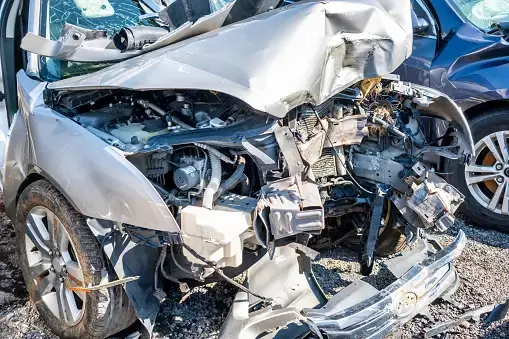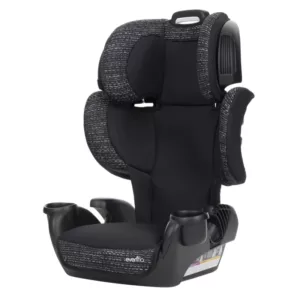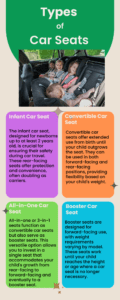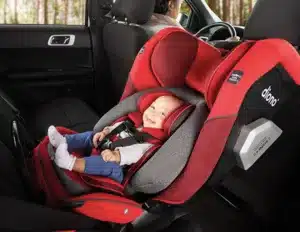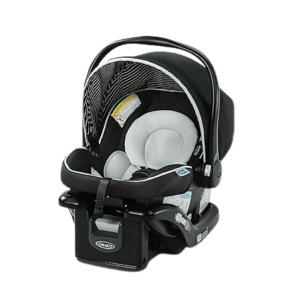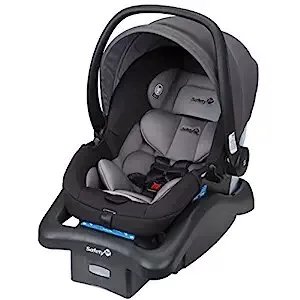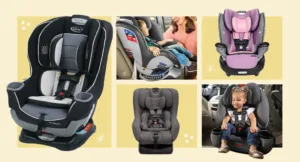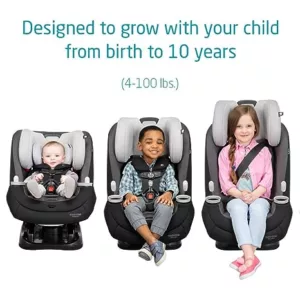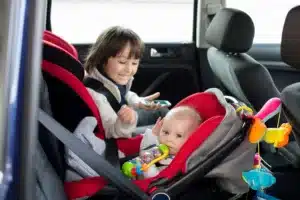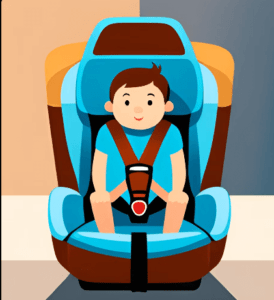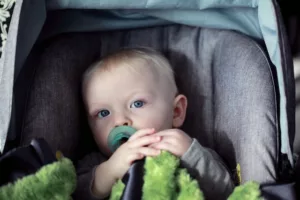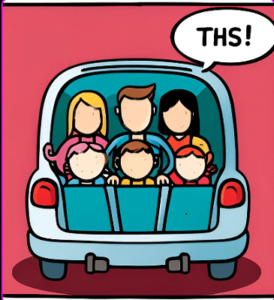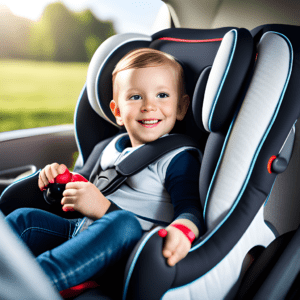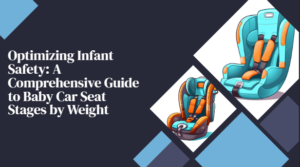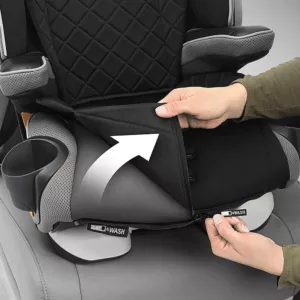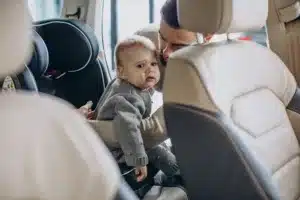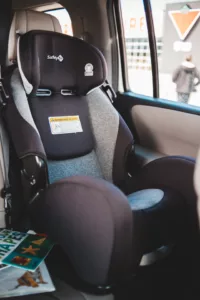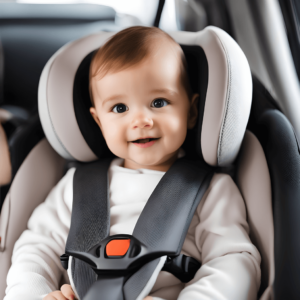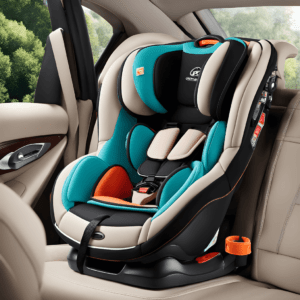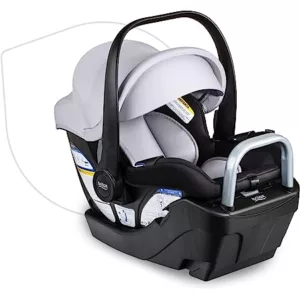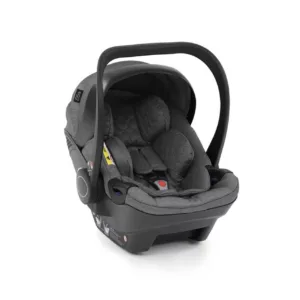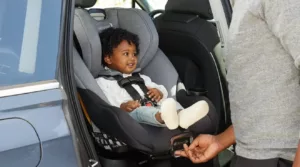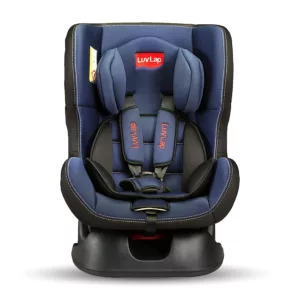How Effective are Baby Car Seats in a Car Collision? Using car seats decreases the likelihood of injury in a car crash by 82%.
Thank you for reading this post, don't forget to subscribe!Ensuring their child’s safety is a paramount concern for all parents, particularly during car journeys. The road is known for its unpredictability, where Accidents can happen in an instant. That’s why baby car seats have become an indispensable tool for parents worldwide. These seemingly simple contraptions are the unsung heroes of the highway, providing a protective cocoon for our most precious passengers.
But have you ever wondered how effective these baby car seats are when it comes to the unthinkable—a collision? As parents, we buckle our little ones into these seats with trust and hope, but understanding the science and statistics behind their performance can provide us with a deeper sense of assurance.
In this article, we’ll delve into the heart of this matter, peeling back the layers of engineering genius, safety standards, and real-world scenarios. We’ll examine the crucial question: How effective are these seats in protecting our children when the world outside our car windows suddenly becomes a realm of unexpected twists and turns? Join us as we unravel the science and stories behind these vital guardians of our little travelers, revealing the secrets that make them a lifeline on the road to child safety.
Table of Contents
ToggleEngineering and Design Principles: How Effective are Baby Car Seats in a Car Collision?
Principles rooted in physics, biomechanics, and child safety are at the core of every baby car seat’s design. These seats are meticulously crafted to distribute the forces of a collision to minimize the risk of injury to the child. Here are some key design principles:
Rear-Facing Design: Infant car seats are designed to be rear-facing because this position offers the best protection in a collision. It cradles the child’s head, neck, and spine, reducing the risk of injury to these vulnerable areas.
Five-Point Harness: Most baby car seats employ a five-point harness system, securing the child at the shoulders, hips, and between the legs. This design distributes the impact forces across the strongest parts of the child’s body, reducing stress on the neck and chest.
Side-Impact Protection: Many modern car seats are equipped with side-impact protection features. These include reinforced sides and energy-absorbing materials to shield the child from forces generated during a side collision.
Materials and Construction:
Baby car seats are constructed using a combination of high-quality materials. Here are some commonly used materials:
Impact-Absorbing Foam: The interior of baby car seats often contains specially designed foam that absorbs energy during a crash, reducing the force transferred to the child.
Steel Frames: Some car seats have steel frames for added strength and stability, providing a secure structure that can withstand impact.
Harnesses and Straps: The harnesses and straps are made from strong, durable materials that resist stretching or breaking even under extreme stress.
Safety Standards and Regulations: Manufacturers of baby car seats are held to rigorous safety standards and regulations to ensure the highest level of child protection. These standards vary by region but often include guidelines for crash testing, materials used, and labeling. Key regulatory bodies include:
National Highway Traffic Safety Administration (NHTSA) in the United States: NHTSA sets safety standards and conducts crash tests to evaluate car seat performance.
European Safety Standard (ECE R44/04): This standard is used in Europe and imposes strict safety requirements on car seat design and performance.
Labels and Certification: Look for labels on car seats indicating compliance with safety standards. These labels assure that the seat has undergone rigorous testing.
The science behind baby car seats combines engineering ingenuity and a deep commitment to child safety. These seats are more than just comfortable places for infants to sit; they result from careful planning, meticulous design, and rigorous testing, all aimed at one crucial goal – protecting our most precious cargo during the unpredictable journey on the road.
What side Gets the Hit Most? How Effective Baby are Car Seats in Car collision
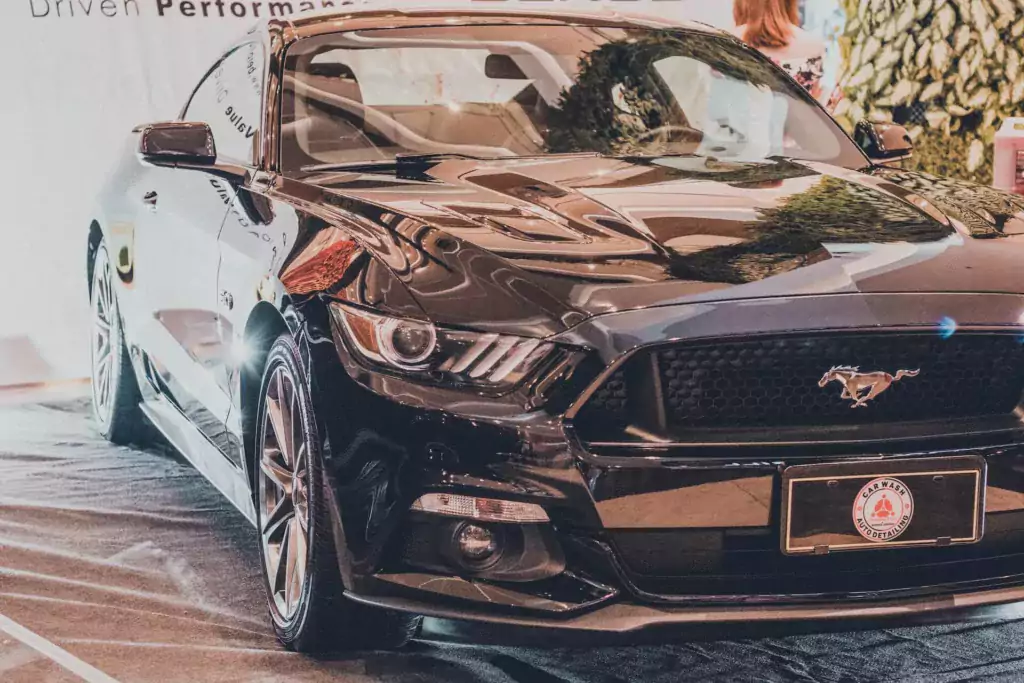
In vehicular accidents, determining which side of the car gets hit most frequently is a complex matter influenced by various factors. The side of impact can vary significantly based on geographic location, traffic conditions, driving habits, and the nature of the collision. However, some general trends and considerations shed light on this topic:
Left-Side Impacts in Countries with Right-Hand Traffic: Left-side impacts are statistically more common in countries where vehicles drive on the right side of the road (e.g., the United States). It is because drivers are seated on the left side of the vehicle, and collisions often result from factors such as running red lights, failing to yield at intersections, or merging improperly.
Right-Side Impacts in Countries with Left-Hand Traffic: Conversely, in countries where vehicles drive on the left side of the road (e.g., the United Kingdom), right-side impacts tend to be more prevalent. Again, this is due to the driver’s seating position, which places them on the right side of the vehicle.
Intersections and T-Bone Collisions: Intersections are among the most common locations for car accidents. T-bone collisions, where one vehicle strikes another perpendicularly, often result in significant side impacts, regardless of the driver’s seating position. These types of crashes can occur at any intersection, from urban streets to highways.
Parking Lot and Low-Speed Collisions: Sideswipe collisions are relatively common in parking lots and low-speed environments. These occur when vehicles collide while moving parallel, often in close quarters. Depending on the circumstances, these impacts can affect either side of the car.
Lane Change and Merging Mishaps: When drivers change lanes or merge onto highways without proper signaling or checking blind spots, they may collide with vehicles in adjacent lanes. Again, these accidents can result in side impacts on either side of the vehicles involved.
Crash Avoidance Technologies: Modern vehicles have various safety features, such as side-impact airbags and collision avoidance systems. These technologies can mitigate the severity of side impacts and reduce the risk of injury, further complicating determining which side gets hit most.
It’s important to note that while some patterns exist, predicting the side of impact in a car crash is far from straightforward. The dynamics of each collision are unique, influenced by the speed of the vehicles, the angle of impact, road conditions, and driver behaviors. The most critical aspect of addressing this issue is not predicting which side will be hit but prioritizing safe driving practices, including obeying traffic laws, practicing defensive driving, and ensuring that vehicles have safety features designed to protect occupants during side impacts.
What is the Safety Placement for Infant Car Seats? What is the Safety Position for Infant Car Seats?
Placing a baby car seat in a car is crucial for the safety and well-being of your child. Here are some guidelines on where to place the baby car seat in a car:
Rear Seat: The safest place for a baby car seat is in the vehicle’s rear seat. It applies to all types of vehicles, including cars, SUVs, and trucks. Positioning the car seat in the backseat minimizes the risk of injury in case of a collision, especially in front and side-impact crashes.
Center Position (if possible): If your vehicle has a rear middle seat, it is generally considered the safest location for the baby car seat. The car seat in the center provides additional protection during a side-impact collision. Nevertheless, only some vehicles possess a central seat or suitable LATCH anchors in that position.
Rear-Facing: Always ensure the baby car seat is installed rear-facing. Rear-facing car seats are designed to cradle and protect a baby’s head, neck, and spine, which is crucial for their safety, especially in the early months of life.
Check the Car Seat Manual: Consult the car seat manufacturer’s and vehicle owner’s manual for specific guidance on proper installation and placement. Different car seats and vehicles may have unique requirements.
Avoid the Front Seat: Always avoid placing a rear-orientation car seat in the front passenger seat equipped with an active airbag. If the airbag deploys in a collision, it can pose a severe risk to a rear-facing child.
Secure Installation: Always ensure the car seat is securely installed using the vehicle’s Lower Anchors and Tethers for Children (LATCH) system. Follow the manufacturer’s instructions and perform a safety check to confirm a tight, secure fit.
Proximity to Driver: It is also important for the driver to have a clear line of sight to the baby. Position the car seat so that you can monitor your child while driving without turning around excessively. Avoid placing large objects between the driver and the car seat that could obstruct visibility.
Avoid Rear-Facing in Front of Active Passenger Airbags: If your vehicle does not have a rear middle seat and you must place the car seat in the rear passenger seat, ensure the front passenger airbag is turned off. Some vehicles let you deactivate the airbag when a rear-facing car seat is used.
Remember that the baby car seat installation and placement are critical for your child’s safety during car travel. Always follow the manufacturer’s instructions and consult the vehicle owner’s manual for specific guidance on car seat installation and placement in your particular vehicle.
Place the Car Seat in the Back Seat: What is the safety position for infant car seats?
Always place the car seat in the rear seat of the vehicle. It is the safest location, as it reduces the risk of injury in a collision. If your vehicle has a rear middle seat, it is generally considered the safest spot for the car seat.
In the domain of impactful collisions, front collisions take the lead. Regarding such incidents, a rear-facing child seat significantly enhances safety by reducing the risk of injury by approximately 85%, harshly contrasting the 50% reduction observed in forward-facing seats.
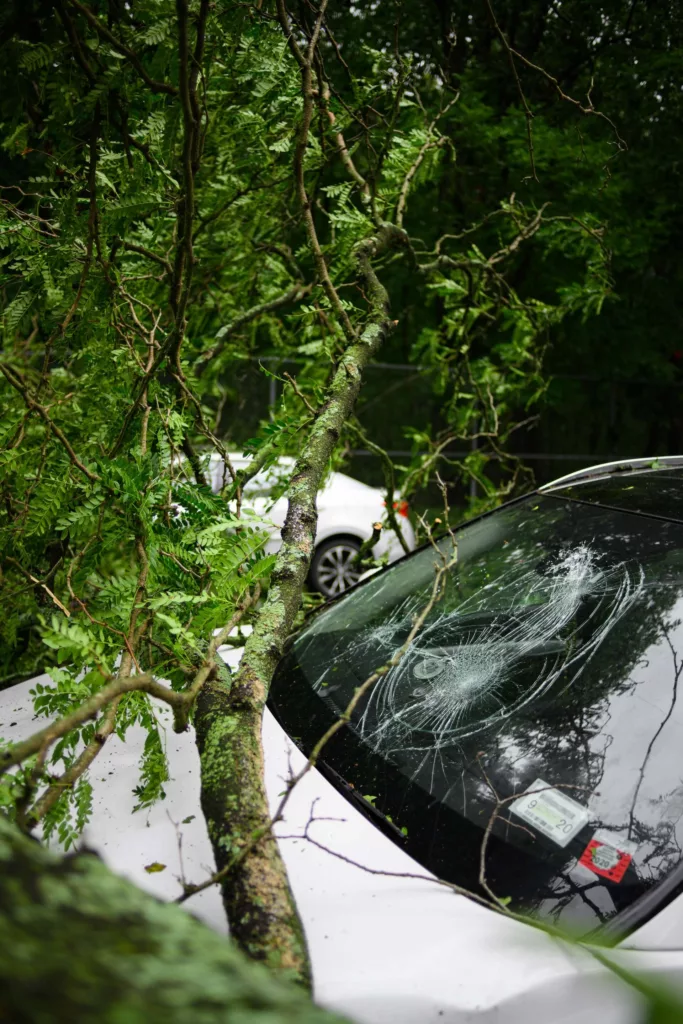
Avoid Front Passenger Seat (if an airbag is active):
The airbag’s deployment in such a scenario poses a significant risk to the baby’s safety. If you need to use the front passenger seat, take precautionary measures to deactivate the airbag.
Harness and Buckle Up Properly:
Ensure the car seat’s harness straps are correctly adjusted and fastened snugly. Position the chest clip at the level of the child’s armpits, and be cautious of bulky clothing that might disrupt the proper fit of the harness.
Stay Informed and Updated:
Keep yourself updated on the most recent safety recommendations and guidelines regarding car seat usage. These recommendations may change as new research and technologies emerge.
Keep a Watchful Eye:
Always monitor your baby while driving. If you need to check on them, safely pull over to the side of the road and attend to their needs. Avoid reaching back while driving.
Secure Loose Items:
Ensure that loose items in the car are properly fastened to prevent them from becoming dangerous projectiles during sudden stops or collisions.
Follow Traffic Laws:
Obey traffic laws, drive safely, and avoid distractions while driving. Being a responsible and attentive driver is essential for your baby’s safety.
Protecting your baby in the car is a shared responsibility between the caregiver and the vehicle’s safety features. Prioritize safety above all else and allocate the required time to ensure your baby’s car seat is correctly installed and used per the manufacturer’s guidelines. These precautions can diminish the chances of injury in the unfortunate event of a car accident.
Real-Life Stories and Testimonials: The Unspoken Heroes of Baby Car Seats
Baby car seats are often unsung heroes in child safety, quietly standing guard in the back seat. But their true power becomes evident when their protective embrace is put to the ultimate test – a real-life collision. The stories of parents and caregivers who have experienced the life-saving effectiveness of these seats are not just testimonials; they are powerful reminders of the importance of these unassuming contraptions.
An Unexpected Guardian Angel:
Imagine the heart-pounding moment when Emily, a young mother, was in a collision at a busy intersection. Her little one, securely fastened in a rear-facing car seat, was nestled comfortably in the back. The impact was jarring, but as the dust settled, Emily was astounded to find her baby unharmed and peacefully asleep. The car seat had cocooned her child, absorbing the shock of the collision and cradling her safely throughout the chaos.
A Grandmother’s Gratitude:
Jane, a grandmother, shared her experience of a rear-end collision that sent her car spinning. Her granddaughter was snugly strapped into her car seat in the back seat. When the car finally came to a stop, Jane’s initial fear turned to immense relief as she saw her precious cargo still safely nestled in her car seat. Despite the terrifying ordeal, the seat had done its job, keeping her granddaughter secure and unharmed.
The Impact of Quick Thinking:
Sometimes, not just the seat itself but the quick thinking of parents makes all the difference. Mark, a father of two, shared how he narrowly avoided a collision by swerving into a ditch. His quick reaction prevented a crash, and he attributed his children’s safety to properly installing their car seats. They remained securely in place throughout the sudden maneuver, a testament to the importance of correct installation.
A Community United by Safety:
These stories, and countless others like them, highlight the incredible protective power of baby car seats in the face of real-world collisions. They underscore that these seats are more than safety devices; they are guardians of our most precious cargo. These anecdotes also serve as a reminder of the importance of proper installation and adherence to safety guidelines.
As a community of parents, caregivers, and advocates for child safety, we share these stories not to inspire fear but to empower. They remind us that while accidents can be unpredictable, we have the means to protect our children. So, the next time you buckle your little one into their car seat, take a moment to reflect on the unspoken heroes who have shielded countless children from harm and remember that you, too, play a vital role in ensuring their safety on the road.
Why opt for a Car Seat Featuring Side-Impact Protection? Safety of Children in Car Impact Collision
When it comes to safeguarding your child during car journeys, choosing the appropriate car seat is a pivotal decision. One feature that parents often prioritize is side-impact protection. But why is this feature so important, and why should you consider a car seat with side-impact protection for your child? Let’s explore the key reasons:
- Enhanced Safety in Side Collisions:
Side-impact collisions can be particularly dangerous for occupants, especially children. Unlike front and rear collisions, where the vehicle’s crumple zones can absorb some of the impact, side impacts often result in direct force against the vehicle’s doors, putting passengers at greater risk.
Car seats with side-impact protection are designed to mitigate the forces exerted on a child during a side collision. They feature additional energy-absorbing material, often reinforced side wings or cushions, that help dissipate the impact energy away from the child.
- Protection for Vulnerable Areas:
In a side-impact collision, the most vulnerable areas of a child’s body are the head, neck, and chest. Car seats with side-impact protection provide extra cushioning and support for these crucial areas, reducing the risk of head and chest injuries.
Many models also feature deeper side walls that act as a protective barrier, shielding the child from intrusions into the car’s interior.
- Adherence to Stringent Safety Standards:
Car seat manufacturers must adhere to rigorous safety standards and regulations, and many of these standards now include specific testing criteria for side-impact protection.
When you choose a car seat with side-impact protection, you can have confidence that it has undergone extensive testing to meet or exceed these safety standards.
- Peace of Mind for Parents:
As a parent, your child’s safety is your top priority. Selecting a car seat with side-impact protection provides peace of mind, knowing that you’ve taken an extra step to safeguard your child in various collision scenarios.
- Versatile Use:
Car seats with side-impact protection are available for various age and weight ranges, from infant seats to convertible and booster seats. You can provide your child with this enhanced safety feature as they grow and transition to different seat types.
- Comprehensive Protection:
While front and rear-impact collisions are more common, side-impact collisions can still occur. Choosing a car seat with side-impact protection ensures comprehensive protection for your child in all collisions.
Choosing a car seat with side-impact protection is a proactive step in enhancing your child’s safety during car travel. It’s an investment in their well-being, offering extra protection for vulnerable areas in a side collision. As you evaluate car seat options, consider this critical safety feature and select a seat that aligns with your commitment to providing the best protection for your precious passenger.
Final Verdict – How Effective are Baby Car Seats in a Car Collision?
In the world of child safety, few things are as paramount as ensuring the well-being of our precious passengers during car travel. Baby car seats, those seemingly simple contraptions, stand as unsung heroes on the highway, forming a protective cocoon around our children. As parents, we entrust our little ones to these seats with trust and hope, but understanding their effectiveness in an unthinkable collision can give us a deeper sense of assurance.
In this journey of exploration and discovery, we’ve peeled back the layers of engineering genius, safety standards, and real-world scenarios to answer the crucial question: How effective are baby car seats in a car collision? The science behind these seats reveals a fusion of physics, biomechanics, and child safety, meticulously designed to minimize the risks our children face. Materials like impact-absorbing foam and sturdy harnesses play a pivotal role, while stringent safety standards and regulations ensure that manufacturers prioritize child protection.
Proper installation is the linchpin in maximizing the shield of safety these car seats offer. Understanding where to place a baby car seat within the vehicle is equally crucial, with rear-facing orientation in the rear seat often being the safest choice. Yet, determining which side of the car gets hit most in a collision is complex and influenced by numerous factors. Still, safety practices, such as obeying traffic laws and installing safety features, can significantly mitigate risks.
Real-life stories and testimonials underscore the protective power of baby car seats. These anecdotes highlight the remarkable effectiveness of these seats in real-world collisions, emphasizing the importance of correct installation and adherence to safety guidelines.
Finally, we’ve explored why choosing a car seat with side-impact protection is prudent. Side-impact collisions can pose a significant threat, but car seats equipped with side-impact protection offer enhanced safety in these scenarios. They prioritize protecting vulnerable areas, adhere to stringent safety standards, provide peace of mind to parents, and offer versatile use throughout a child’s growth.
In conclusion, the effectiveness of baby car seats in a car collision is a testament to the fusion of engineering brilliance and unwavering commitment to child safety. These seats are more than just comfortable places for infants to sit; they are lifelines on the road to child safety, offering comprehensive protection when needed.
Frequently Asked Questions – How Effective are Baby Car Seats in a Car Collision?
How effective are baby car seats in preventing injuries during car collisions?
Baby car seats are highly effective in reducing the risk of injuries in car collisions. When employed properly, they can decrease the probability of injury by 71–82% for children compared to solely relying on seat belts. Their rear-facing design and harness systems help protect vulnerable areas like the head, neck, and spine.
What are the key safety features in baby car seats make them effective in car collisions?
Baby car seats incorporate several safety features, including a rear-facing design, a five-point harness system, and side-impact protection. These attributes are crafted to evenly distribute and absorb the forces of impact, thereby diminishing the child’s risk of injury.
Can any car seat provide effective protection in a car collision, or must I choose a specific type?
Not every car seat provides an equal level of protection. Select a car seat appropriate for your child’s age, weight, and height to ensure effectiveness. Infant, convertible, and booster seats are designed for different stages of a child’s growth, so choose one that aligns with your child’s needs.
How important is proper installation for the effectiveness of a baby car seat in a car collision?
Proper installation is critical for maximizing the effectiveness of a baby car seat. Even the safest seat may protect your child if it’s correctly installed.
Are there any additional safety tips or practices that can enhance the effectiveness of a baby car seat in a car collision?
Yes, several practices can further enhance the effectiveness of a baby car seat. These include ensuring the child is correctly harnessed and buckled, positioning the car seat in the rear seat, avoiding the front passenger seat with an active airbag, and staying informed about the latest safety recommendations and guidelines. Properly securing loose items within the car can also reduce the risk of projectiles during a collision.
